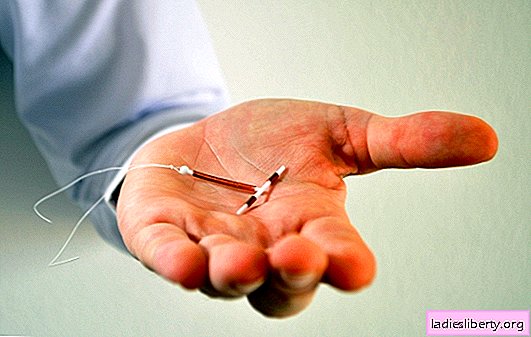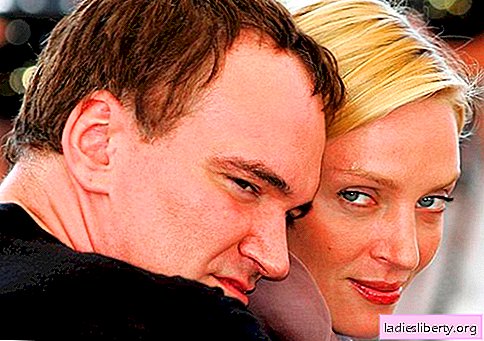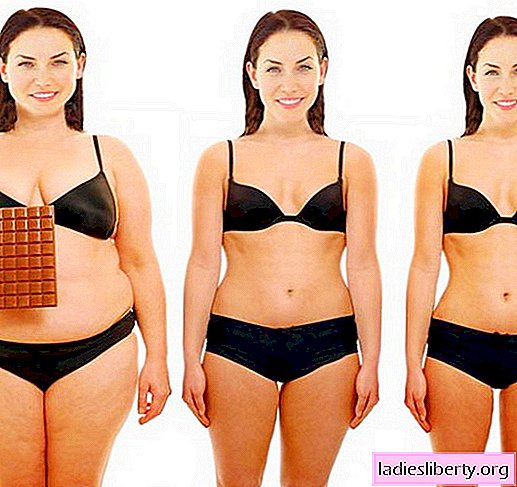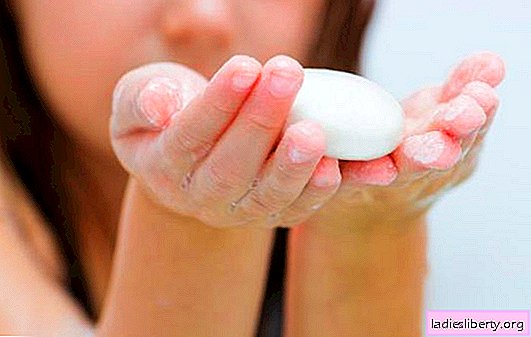
Despite many concerns after the birth of a child, sooner or later the question of preventing an unplanned pregnancy still arises.
It is clear that other intravaginal agents are excluded, condoms are not suitable for everyone.
There remains a spiral, which is one of the best means of preventing pregnancy.
Is it possible to put a spiral after childbirth - a frequent dilemma that a nursing mother must decide for herself.
According to statistics, 95% of women resume sexual life after childbirth in about two months. This is necessary for the final restoration of the female body and the cessation of all secretions.
An intrauterine device is the most common contraceptive. It is located in the uterine cavity and creates a barrier to implantation of the ovum. With proper use, the effectiveness of intrauterine contraception approaches 100%. This application of the spiral is comparable to the action of oral contraceptives.
Like any medical device and method, the spiral has its own advantages and disadvantages.
Spiral after childbirth - can I put
Is it possible to put a spiral after childbirth - this question often arises during pregnancy.
The introduction of a spiral to nulliparous women is very difficult due to the tightly closed uterine pharynx and narrow cervical canal. The postpartum spiral, as mentioned above, is the most effective contraceptive method available.
The advantages of using a spiral after childbirth include:
1. High, almost 100% effectiveness of this method, comparable with the result from the use of oral contraceptives. At the same time, there is no need for additional efforts: taking tablet preparations requires constant monitoring, even one missed tablet can lead to pregnancy.
2. The usual spiral does not change the hormonal background, as occurs when taking tablet contraceptives, and, therefore, does not change ovulation. Therefore, after removing the spiral, there are no problems with the planned pregnancy in the near future. True, there are hormone-containing spirals, after the application of which fertility is restored at about the same time as when taking tablet hormonal contraceptives.
3. Does not disturb lactation.
4. The spiral maintains contraceptive functions constantly, including the period of menstruation.
5. The duration of contraception is from 5 to 10 years.
6. Does not cause discomfort to any of the sexual partners.
7. Affordable and easy to install.
These advantages of the spiral over other methods of contraception answer the doubts of some women about whether it is possible to put the spiral after childbirth.
8. It is possible and even convenient, since modern spirals contain silver and gold components, the presence of which suggests an anti-inflammatory effect.
9. The spiral is a good alternative for many women after childbirth with existing contraindications for taking tablet contraceptives.
10. In addition, which is very important for a woman after childbirth, intrauterine contraception does not cause metabolic disorders, unlike oral contraceptives. This is another powerful argument and the answer to the question: "Is it possible to put a spiral after childbirth?"
11. Also important is the economic aspect. One pack of contraceptives costs less than a spiral. But an oral contraceptive will have to be bought monthly, unlike an intrauterine device, which will be used for many years (at least up to five).
The spiral after childbirth - the disadvantages of the method and contraindications
There are some disadvantages of using a spiral, which you need to know about:
1. Does not interfere with the penetration of pathogenic microbes that cause sexually transmitted diseases.
2. It is a means of abortion.
3. It should be installed only by a specialist to avoid complications. These include painful cramps, profuse and long menstrual and intermenstrual bleeding, various inflammations.
4. Under certain conditions, if a woman ignores the recommendations of a specialist, the spiral can independently leave the uterine cavity. The frequency of spiral (expulsion) precipitation is low, but you need to know about this possibility. Only an expert can insert and remove an existing intrauterine device. Each woman can control it, following the advice of a doctor.
Despite the positive aspects of the intrauterine device, there are contraindications to its establishment. The doctor will warn about them when examining and deciding on the choice of contraceptives. Such contraindications are:
1. Uterine fibroids.
2. The pathological structure of the uterus, in which it is impossible to place a spiral in its cavity.
3. Frequent inflammation of the urogenital organs.
4. Painful, heavy and prolonged menstruation.
5. With a history of uterine bleeding.
The spiral after childbirth - when you can put
The postpartum spiral — when it can be inserted — is usually decided by doctors. In each case, this issue is solved individually, in the same way as the selection of the spiral itself takes into account the state of the woman, the characteristics of the body and the associated pathology.
Since there is a variety of intrauterine devices, they are made with the inclusion of various materials, it is necessary to imagine that after delivery it is not recommended to put a copper spiral, because it will not only not remove the inflammatory process, but will become its source. Therefore, after childbirth, the most suitable option is copper - silver, not containing hormones.
The intrauterine device Mirena, which in addition to contraceptive properties, has therapeutic: reduces local inflammation, restores hormonal levels, reduces menstrual bleeding, can be used only after cessation of lactation.
Spiral after childbirth - when to put: in the absence of contraindications, you can do this even in the hospital. The presence of an intrauterine device will not affect the "cleansing" of the uterus from all postpartum secretions (blood, mucus, etc.).
If in the maternity hospital the spiral was not delivered, then in the future it can be installed during the first menstruation. With active breastfeeding, menstruation appears a maximum of six months later, since the hormones prolactin and progesterone produced during breastfeeding suppress ovulation. The spiral is placed during the first menstruation, which occurs after childbirth. Or two months after the birth, so that the internal genital organs recover after the birth. Postpartum discharge lasts the same amount of time. For women undergoing a cesarean section, the spiral is established after six months.
If the questions are whether it is possible to put a spiral after childbirth and when to put a spiral after childbirth - a woman has decided for herself, the choice is made, you need to know some more important aspects: each spiral has a certain time of action. It is necessary to know exactly the expiration date, and remove the spiral before it ends.
If this contraceptive does not fit, a specialist will remove the spiral at any time.
If the spiral changed its position or fell out twice, you need to change it.
If there is an intrauterine device, one must take into account that after its introduction, the uterus will respond to the device with muscle contractions. This may occur:
- pulling pains or discomfort in the lower abdomen,
- more abundant than before the spiral, menstruation,
- menstruation can become longer,
- in the intermenstrual period, spotting may occur, which did not exist before.
Therefore, it is important to control the appearance and smell of secretions, so as not to miss the inflammation.
Need to know, that in the presence of a normally installed spiral, neither a man nor a woman should experience any discomfort during sexual contact. In the event that any unpleasant or painful sensations arise, it is necessary to check with the gynecologist the location of the spiral in order to prevent its loss or the correct location.
And another important question that concerns any woman is the effect of the spiral on libido or sensations during sexual intercourse. A spiral does not alter either sensitivity or libido.
Only a gynecologist can put and remove the spiral. In the presence of a spiral, it is necessary to visit a doctor every six months to control, since the spiral may shift.











